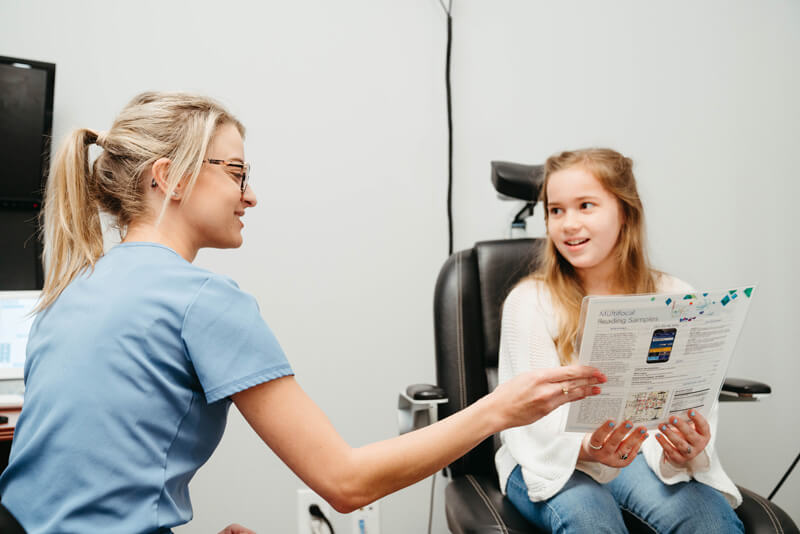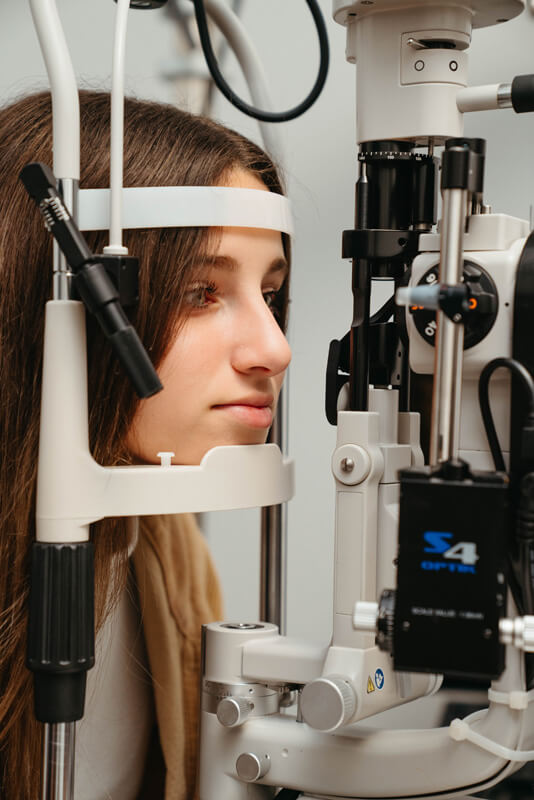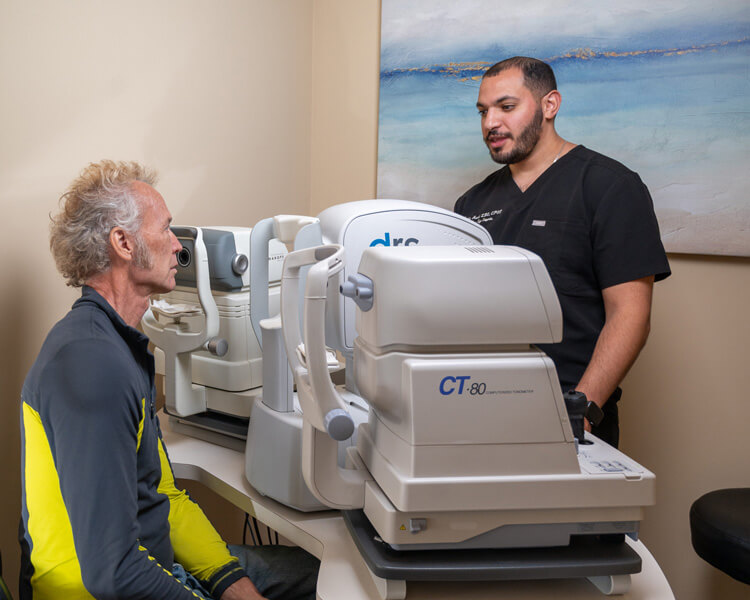CRT & Ortho-K

CRT and Ortho-K Treatment at True Eye Experts
Eyeglasses and traditional contact lenses are proven to correct nearsightedness, farsightedness, and other visual problems. Some people will always seek the freedom & convenience of wearing no corrective lenses of any kind during their daily activities. While many are willing to go ahead with long-term solutions such as laser surgery, others would prefer a less invasive, more reversible answer. There is a solution to this known as corneal refractive therapy or CRT — overnight reshaping lenses fit and dispensed at True Eye Experts in Florida.

What is Involved in CRT Treatment?
The idea for CRT stems from the late 1950s when eye doctors noticed those nearsighted patients who wore hard contact lenses sometimes experience a temporary improvement in their unaided eyesight. That’s because the shape of the cornea plays a critical role in how light is refracted and how images are delivered to the retina. An abnormally-shaped cornea can cause myopia (nearsightedness), hyperopia (farsightedness) or astigmatism. But the cornea is also malleable — it can conform to a new shape for a short period of time. This discovery led to the development of corneal refractive therapy, also known as orthokeratology or Ortho-K.
CRT involves the use of specially designed contacts that you wear to bed at night. As you sleep, the lenses apply just enough gentle pressure to reshape your corneas into your ideal vision prescription. Upon awakening, simply remove the lenses and enjoy the entire day with clear vision without glasses or contact lenses. The effect can sometimes last for days at a time — because the CRT lenses are worn overnight, you can achieve uninterrupted vision correction with them. The fact that the effect is temporary means that you can always change your mind and take up glasses or traditional contacts whenever you feel like it. Many patients regard this flexibility as a great advantage over refractive correction surgery.
Is CRT Treatment Right For Me?
No single form of vision correction is equally right for everyone, and that goes for CRT as well. It is especially effective for children with mild to moderate nearsightedness, but it can also work for adults too. CRT is a viable solution for some cases of farsightedness or astigmatism. Severe cases of nearsightedness, farsightedness, or astigmatism may not be fully correctable with CRT, will be happy to provide you with other options for the best possible eyesight (which, after all, is the primary goal). CRT is an ideal solution for individuals who play sports or participate in other activities that make wearing lenses impractical. They may even help slow the progression of myopia in younger patients, which might mean that CRT is an amazing choice for your kids. Contact True Eye Experts today to learn more about our CRT services and schedule an initial evaluation.

Learn More About CRT Lenses at True Eye Experts
For more information about Corneal Refractive Therapy (CRT) and Ortho-K, visit one of our locations or schedule an appointment online to learn more.
Commonly Asked Questions About Ortho-K:
How Does Ortho-K Work?
Ortho-K lenses are specialty contact lenses that are only applied at bedtime and worn overnight. While you sleep, the lenses gently reshape the front surface of your eye (the cornea) to correct your vision, so you can see clearly without glasses or contact lenses by the time you’re awake. The effect is temporary – generally enough to get you through a day or two, so you will need to wear the ortho-k lenses each night, to be able to see clearly the next day.
Currently, there are two brands of orthokeratology lenses that have been approved by the FDA. These are the Corneal Refractive Therapy (CRT) lenses from Paragon Vision Sciences and Vision Shaping Treatment (VST) lenses from Bausch & Lomb.
Who is a Candidate for Ortho-K?
Orthokeratology is frequently a good option for nearsighted individuals who are too young for LASIK surgery or for some other reason are not good candidates for vision correction surgery. Because it can be discontinued at any time without permanent change to the eye, people of any age can try the procedure, as long as their eyes are healthy.
Ortho-K is particularly appealing for people who participate in sports, or who work in dusty, dirty environments that can make contact lens wear difficult.
How Well Will I Be Able to See With Ortho-K?
The goal for Ortho-K is to correct your vision to 20/20 without eyeglasses or contact lenses during the day. In FDA trials of both CRT and VST lenses, more than 65% of patients were able to achieve 20/20 visual acuity after wearing the reshaping lenses overnight. More than 90% were able to see 20/40 or better (the legal vision requirement for driving without glasses in most states).
Success rates for ortho-k tend to be higher for mild prescriptions. Call our office to find out if your prescription is within the range that can be successfully treated with Ortho-K.
How Long Does Ortho-K Take?
Though you may see some improvement in your vision after a day or two of overnight ortho-k, it can take several weeks for the full effect to be apparent. During this time, your vision will not be as clear as it was with glasses or contacts, and you are likely to notice some glare and halos around lights. It’s possible you may need a temporary pair of eyeglasses for certain tasks, like driving at night, until your vision is fully corrected by the ortho-k lenses.
Is Ortho-K Going to Hurt?
Some people have comfort issues when attempting to wear gas permeable contact lenses during the day. But since ortho-k GP lenses are worn during sleep, comfort and lens awareness are generally not a problem.
How Much Does Ortho-K Cost?
Ortho-K is a longer exam than a regular contact lens fitting. It requires a series of office visits and potentially multiple pairs of lenses. Also, GP lenses used for Ortho-K are more costly than most regular contact lenses. Therefore, fees for orthokeratology are higher than fees for regular contact lens fittings. The cost is offset due to the simple fact that prescription glasses and daily wear contacts are not needed for Ortho-k patients at all.
What If I Decide I Want Lasik After Ortho-K
Yes, it’s possible to have LASIK surgery after orthokeratology. But because ortho-k lenses reshape your cornea, you must stop wearing the lenses for a period of time (usually several months) so your eyes can return to their original shape and stabilize. Be sure to tell your LASIK surgeon that you’ve worn ortho-k lenses, so they can advise you how long you should wait before having the surgery.
